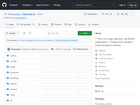Themeister opublikował drugiego kandydata wersji 0.9.7 multiemulatora RetroArch - następce SSNESa, który poprzez obsługę innych bibliotek emulacyjnych pozwala nam zagrać w gry ze SNES (biblioteka bsnesa, snes9x, snes9x-next), NES (biblioteki bNes, FCEU), GBC (gambatte), GBA (VBA-Next, Meteor), SEGA GENESIS (Genplus GX) a także gier arcade dzięki obsłudze biblioteki FinalBurn Alpha.
Póki co, RetroArch nie dorobił się żadnego changelogu, pozostaje więc, dla dociekliwych, prześledzenie commitu na githubie
Features
RetroArch has several features not commonly found in other emulators. Some notable ones are:
Braid-style rewind
- Rewind is a very powerful, and useful feature. It replaces careful save stating and reloading for beating (too) hard levels. It allows you to back up mistakes in real-time very similar to the wonderful game Braid. Here's a video showing off the feature.
- Depending on the emulator core, you can rewind approx. 1 minute per 20MB RAM you give it.
Multi-pass GPU shaders
- RetroArch supports use of GPU shaders for image processing. This means you can achieve far more powerful effects than old-school CPU filters allow, given constraints on processing power.
- RetroArch supports the XML shader spec v1.1, and also a Cg shader specification found here. The XML shader spec is partly supported by bSNES, and the Cg shader specification is fully supported in SNES9x/Win32 as well as lots of the popular homebrew PlayStation 3 emulator ports.
- Multi-pass shaders allow you to stack several shaders on top of each other, either to create interesting effects, or one very complex effect.
- RetroArch extends the XML shader spec a bit to allow for things like lookup textures as well as arbitrary lookup of previous passes. With some simple declarations you can for example take two passes, render them to different targets, then make a third pass to blend the two previous passes together in some interesting way. For all of the passes, you have full control over things such as input/output scale and filtering options. Hopefully, this will be part of an eventual v1.2 spec.
- It also adds support for Python scripting, where Python scripts can control shader input for some very interesting effects combined with lookup textures. Python modules have read-only access to input and SNES RAM which means you can create auxillary graphical effects for certain SNES games based on game state.
- Multi-threaded FFmpeg recording
- You can dump gameplay footage to disk in real-time using FFmpeg/libavcodec. It uses FFV1 (RGB32) and FLAC for fully lossless encoding. Due to encoding happening in a thread, there is no major speed hit. The outputted video can be processed directly by FFmpeg and/or AVISynth to mention a few.
Audio DSP plugins
- RetroArch defines a plugin API for audio DSP effects. Plugins can perform audio processing in floating point, and act as the primary resampler if desired. Care is taken to allow for GUIs in the plugin. The plugin is regularily pumped to drive a possible event loop. There is also a keybind to pop up possible GUI configuration windows.
Peer-to-peer netplay
- RetroArch supports a simple, but effective netplay implementation. It employs UDP and rollback mechanics to hide latency, similar to GGPO.
TTF-font on-screen display
- RetroArch renders on-screen messages for status. You are not limited to one font type. ;)

 RetroArch - Simple Multi-emulator frontend based on libretro.
RetroArch - Simple Multi-emulator frontend based on libretro.